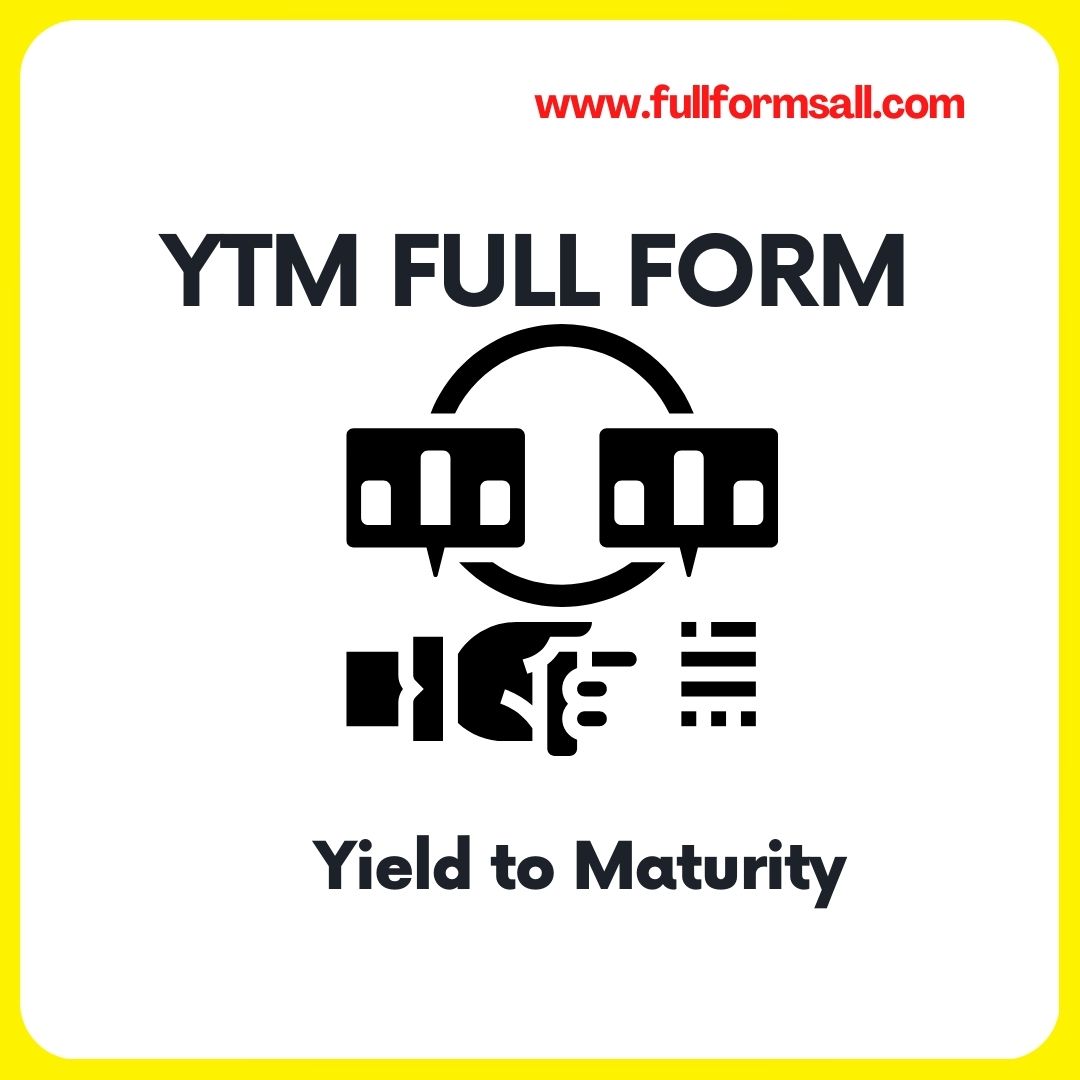In this article you get to know about YTM full from and other different abbreviations of YTM in various fields. YTM full form refers to Yield to Maturity.

YTM means how much return we are getting from the bond when it matures. It’s nothing but the rate of return earned from the bond. Yield to Maturity is referred to as redemption yield or book yield. YTM is sum of two major things. All the interest you get from the bond. Whatever the premium or discount you get from the bond when you purchase. These sum put together called as concept Yield to Maturity. The term YTM contains two components Yield and Maturity. Yield refers to interest on bonds divided by bond price. Maturity refers to when a company issued a Bond for 10 years then maturity will be 10 years. YTM is expressed in the annual rate. Yield to Maturity is a financial term that represents the total return anticipated on a bond if the investor holds the bond until it matures. It is expressed as an annual rate and considers both the coupon payments and the capital gain or loss on the bond. The YTM is considered the most accurate way to determine the total return on a bond and is used to compare bonds with different coupon rates, maturities, and credit ratings. To calculate YTM, one needs to know the coupon rate, the face value of the bond, the market price of the bond, and the number of years until the bond matures. The coupon rate represents the amount of interest paid annually on the bond, expressed as a percentage of the face value. The face value represents the amount that the bond will be worth at maturity. The market price represents the current value of the bond, which may be different from the face value due to changes in interest rates, creditworthiness of the issuer, and other factors.
Yield to maturity can be calculated using the present value formula, which calculates the present value of all future cash flows from the bond, including coupon payments and the return of face value. The formula takes into account the time value of money, which states that a dollar received today is worth more than a dollar received in the future. The formula adjusts the future cash flows to their present value, which represents the amount of money that would be required today to generate the same future cash flows. Once the present value of all future cash flows is calculated, the YTM is determined by finding the discount rate that equates the present value of the future cash flows to the market price of the bond. This discount rate is the YTM, which represents the annual return an investor would receive if they held the bond until maturity.
It is important to note that the YTM is an estimate of the average annual return over the life of the bond and may not reflect the actual return that an investor will receive. The actual return may be higher or lower depending on a number of factors, including changes in interest rates, creditworthiness of the issuer, and fluctuations in the market price of the bond. Yield to maturity is used by investors to compare bonds with different coupon rates, maturities, and credit ratings. By comparing the YTM of different bonds, investors can determine which bonds offer the highest return for the level of risk they are willing to take. For example, bonds with higher YTM generally offer higher returns but also carry higher risk, as the issuer may be less creditworthy and more likely to default on the bond. On the other hand, bonds with lower YTM generally offer lower returns but also carry lower risk, as the issuer is considered more creditworthy and less likely to default on the bond. In addition to being used by investors, yield to maturity is also used by issuers of bonds to determine the coupon rate that will make the bond attractive to investors. By determining the YTM that investors are willing to accept for a given level of risk, issuers can set the coupon rate for the bond to attract the desired level of investment. Yield to maturity is a valuable tool for both investors and issuers of bonds. It provides a comprehensive measure of the total return anticipated on a bond if held until maturity, taking into account both coupon payments and capital gain or loss. By comparing the YTM of different bonds, investors can determine which bonds offer the highest return for the level of risk they are willing to take, while issuers can use YTM to determine the coupon rate that will make the bond attractive to investors.
Different abbreviations of YTM in various fields are as follows
| Term | Abbreviation | Category |
| YTM | Yield To Maturity | Business |
| YTM | Yang Teramat Mulia | Business |
| YTM | You The Manager | Computing |
CONCLUSION:
Dear reader in this article you get to know about YTM full from and YTM term used in various other fields, If you have any query regarding this article kindly comment below.


